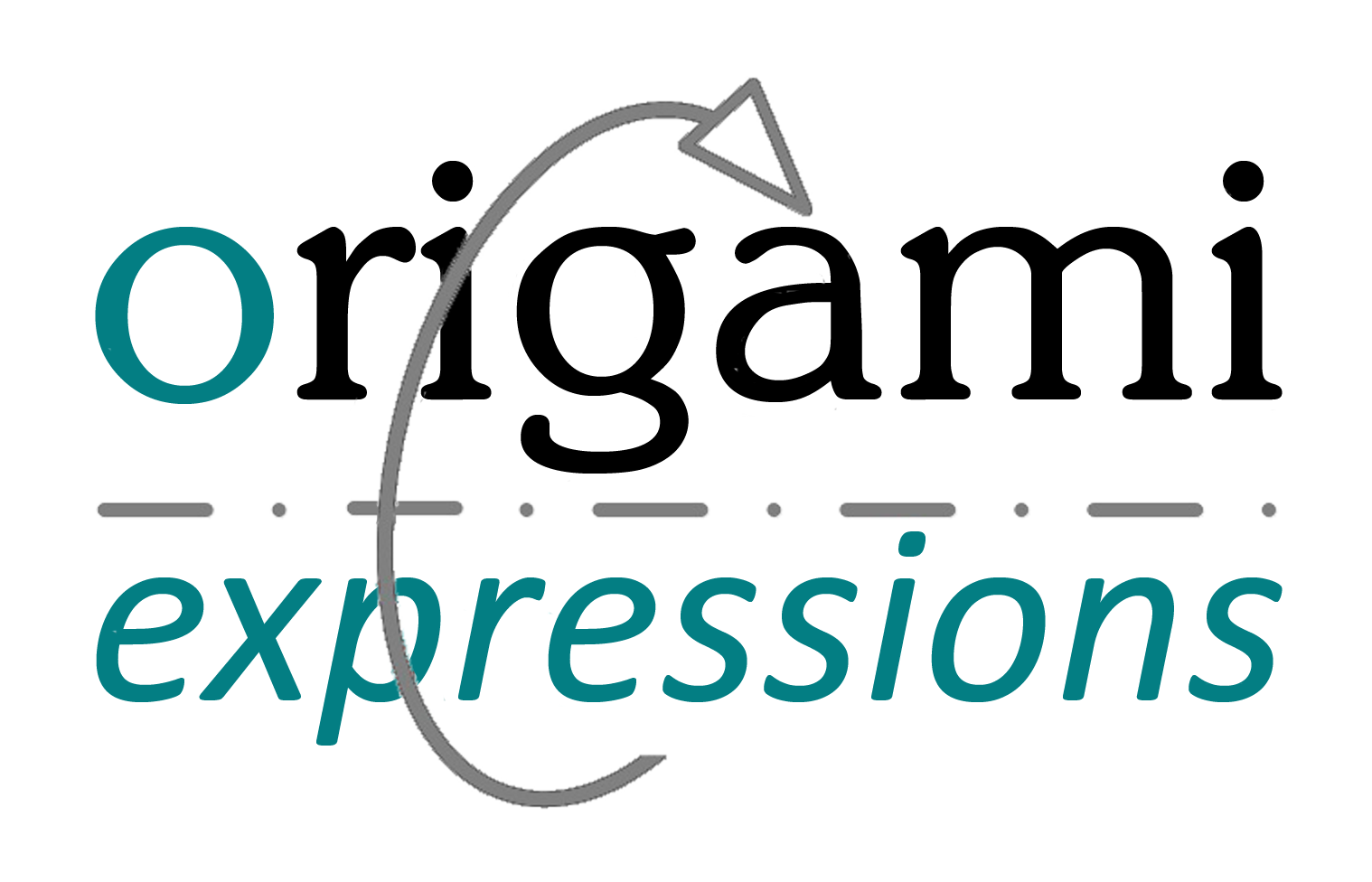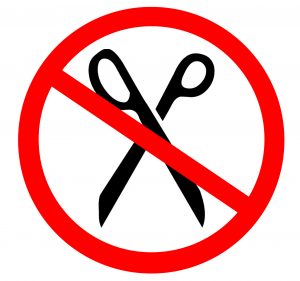When a package says easy open, I end up using scissors, knife, hammer, gun and a light saber.
Anon
Paper cutting in origami? Scissors? Is that ‘allowed’?
This is one of those enduring debates in origami that won’t go away! What are the origami ‘rules’? Almost everyone that enjoys origami has an opinion on it. Here’s a summary of the basic arguments in favour of and against cutting the paper, and my own opinion.
Note: This post contains affiliate links. See Disclosure below for more information.
The argument against Paper Cutting in Origami
Origami is about paper folding!
Origami is a transformative art form. You start with a piece of paper and then fold it up into a different shape. When you’ve finished, nothing has been added, nothing has been taken away, and what you have left is exactly the same thing as you started with – a piece of paper. It’s just been made into a different shape.
Cutting the paper violates that basic rule. It means that when you have unfolded it, the paper is no longer the same shape as it was in the first place. Mick Guy, a former President of the British Origami Society said it best when he said ‘if you cut the paper, it’s not origami.’
There really isn’t any need
Anyone that’s ever read Origami Design Secrets by Robert Lang will know that it’s theoretically possible to make pretty much any shape from a square piece of paper, it’s just a question of good design, complexity, and folding ability. With that in mind, using scissors is just a shortcut, and one that can be got round with good design.
The argument in favour of cutting the paper
Traditional models use it
This is true. Some traditional models do allow for paper cutting in origami. One example is a spider design which is derived from a traditional frog, and gets its eight legs by cutting each of the four legs in half. If it’s been acceptable for traditional models for centuries, why isn’t it acceptable now?
The end justifies the means
If it’s necessary to cut the paper to get a good result, an interesting and appealing final model and cutting the paper is the simplest and quickest method of doing so, then why not? Why compromise a good design just to overcomplicate things?
You have to cut the paper to start with anyway to get it the right shape
Even paper that is supposed to be square often isn’t a perfect square and has to be trimmed. This means that it’s a bit artificial to say ‘there is no place for paper cutting in origami’ when you’ve had to trim the paper in the first place!
What about wet folding?
Wet folding is the technique of moistening the paper with a damp rag and then folding the paper while it’s wet. If you can’t use paper cutting in origami, then surely you can’t use water either?
My View
My opinion on cutting the paper is pretty simple – I won’t use scissors in my origami, but equally I won’t tell you that you can’t. This is something that each person that makes origami models has to decide and I’m a bit of a purist.
To me, cutting takes away from the value of origami as a transformative artform. I can see the merit of the argument that the ends justify the means, and ‘designing out’ a cut in a model can make the design massively more complex. That said, taking a pair of scissors to the model just feels like the model has been cheapened slightly by it. I like the idea that you start with a sheet of paper and you finish with the same sheet of paper – not the same sheet of paper with a hole in it.
The idea that paper cutting in origami is ok because you’ve had to cut the paper to shape in the first place just doesn’t stack up. It’s true, but origami instructions have to start somewhere – otherwise where do you stop? Yes, the statement ‘start with a square sheet of paper’ can be seen as a fairly arbitrary point and the paper has to be cut to size, but If you take that argument to its logical conclusion you can choose any arbitrary point you like, for any artform. ‘Cut down three trees and pulp them…’. Your average artist using oil paints works with paint they buy off a shelf. That’s another purely arbitrary point. They don’t go out and harvest materials for making different coloured pigments.
Wetfolding as an excuse for cutting the paper doesn’t make sense to me either. Wetfolding is a means of loosening the sizing in the paper fibres to make soft folds and curves possible. When the paper dries though, what is left is the same sheet of paper you started with. You could wet it again, unfold the paper and end up with what you started with. This isn’t true of cutting. Once you’ve cut a slit in the paper, that cut will always be there. Using sticky tape to repair it doesn’t take the cut away.
I know some paper folders that will use scissors. I know some that will use glue, and I know some that will decorate or draw on the paper. It’s up to you to decide what you think is acceptable –how closely you follow the ‘rules’ of origami and whether you think paper cutting in origami is ok. . Personally, I’m with Mick Guy here – if you’ve cut the paper, it’s not origami. Paper sculpture, yes. Origami, no. If you do choose to include the odd cut in your origami though and you’re happy with that, then that’s fine by me.
I’ll leave you with a short film from the British Origami Society, in which several paper folders and designers give their opinions on paper cutting in Origami.
Get Involved
I’d love to hear your views on origami paper cutting. Feel free to let me know what you think in the comments below, or you find can me on Instagram or Twitter. Check out my Pinterest boards too!
Sign up for my origami newsletter here and get our free Origami eBook.
Disclosure: This post contains affiliate links. This means we will receive a small commission for some purchases made using links in our blog with no additional cost to you. Please be assured we would not promote any product unless we believe that our readers will also benefit. The commission does not influence the editorial content of this site.
Origami Expressions is a participant in the Amazon Services LLC Associates Program, an affiliate advertising program designed to provide a means for sites to earn advertising fees by advertising and linking to amazon.com, amazon.co.uk, amazon.ca. Amazon and the Amazon logo are trademarks of Amazon.com, Inc. or its affiliates.

